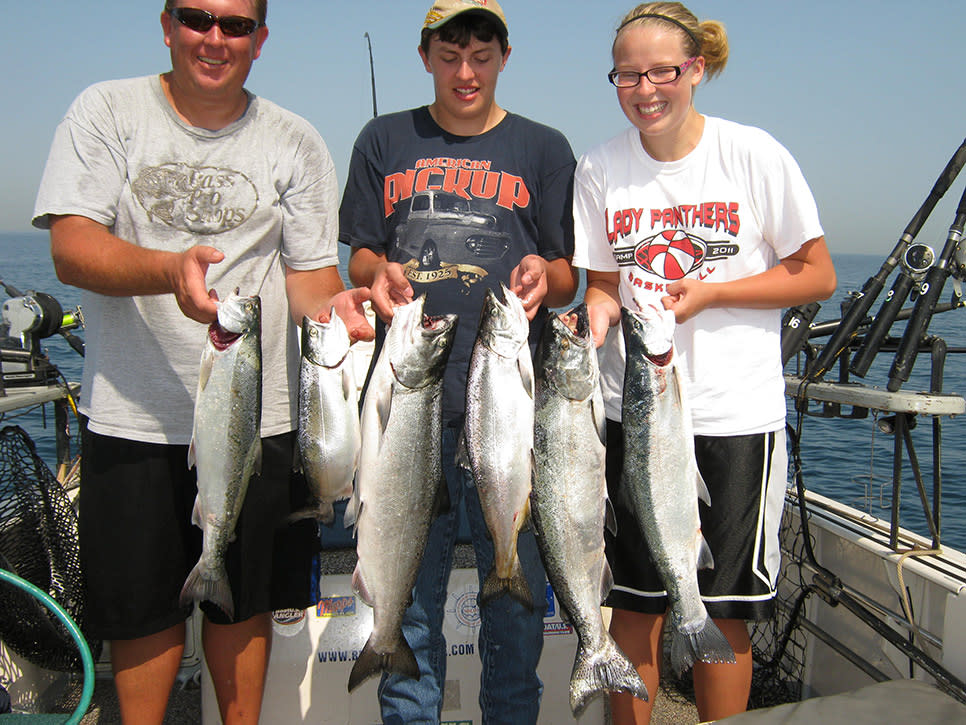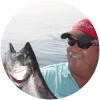As a lifelong fisherman, I’ve seen lakes cycle from boom to bust or bust to boom many times. Fish populations naturally go through cycles in almost all lakes for many reasons. Among these reasons is the reproductive or spawning success of native fish. A few years after a couple of good spawns, the lakes may team with catchable fish. A few years after a poor spawn, often due to weather issues, the number of fish can decline. It’s nature’s way.... It’s natural.
I’ve been fishing for Lake Michigan salmon for most of my adult life and operating a charter fishing business on Lake Michigan for half my adult life. Why is it the fishing on Lake Michigan, season after season, remains consistently good? Is it unnatural?

Actually, it is. Mother Nature has had very little to do with the fish population in Lake Michigan for the last half century. It’s a long story, starting with human misuse and abuse of the lake and the elimination of almost all the species of fish anglers like to catch. In the void this created, a small invasive species called alewife became super-abundant and fisheries managers test-stocked Coho salmon to see if they would eat alewife and thrive in fresh water.
Cohos (native to the Pacific Northwest) did thrive in this unnatural, freshwater environment while preying primarily on alewife - native to brackish environments along the East Coast of America. Encouraged by the success of Coho salmon, the Indiana DNR along with the DNRs of other Lake Michigan states, continued stocking Coho salmon and began stocking king salmon, brown trout and steelhead trout into the lake. The U.S. Fish and Wildlife Service restocked lake trout, Lake Michigan’s original top-of-the-food-chain predator.
All of these fish were suited to living and growing to maturity in Lake Michigan. Unfortunately, the environment did not provide suitable places and conditions for the adult fish to reproduce in the wild and these non-native salmon and trout don’t live long lives. Cohos only live three years and king salmon live four years.
Since the fish won’t naturally repopulate the lake, each state’s DNR operates salmon and trout hatcheries to grow fingerlings to make annual stockings to their portion of the lake. This constant replenishing of the fish being caught and kept by anglers and those dying naturally at their end of their life cycle is what makes Lake Michigan fishing “unnaturally” productive season after season, year after year. The number of fish available to catch each year remains constant and not subject to the whims of nature.
Ready to Fish?
When you are planning your visit to Northwest Indiana, think about getting in on the “unnaturally good” salmon, steelhead and trout fishing available along Lake Michigan’s South Shore. Any of the professional captains in Indiana’s North Coast Charter Association will be happy to show you an unnaturally good experience. Find them at: www.charterfish.org.
More From Captain Mike
Fishy Activities When You Aren't Fishing Along the South Shore
- 4 min read
Lake Michigan’s South Shore Region is one of the premier fishing areas in all the Great Lakes…
Big Groups, Big Fish, Big Fun on Lake Michigan
- 4 min read
Going fishing is many things to many people. That’s one of the allures of the sport. For some, the…
Sand and Salmon - Treasures of Indiana’s North Coast
- 3 min read
Indiana residents kept a secret for many years. Hoosiers knew their Lake Michigan beaches ranked among the top…
There are Salmon in Indiana
- 3 min read
Some people don’t know there are salmon in Lake Michigan. Some people think there has always been…
Lake Michigan Provides “Unnaturally” Good Fishing Every Year
- 3 min read
As a lifelong fisherman, I’ve seen lakes cycle from boom to bust or bust to boom many times. Fish…
Northwest Indiana for birding or just bird enjoying
- 3 min read
Photo: More than 15 thousand cranes stop in NW Indiana on their migrations north and south each…
Clay Games Build Shooting Skills
- 3 min read
Photo: Shooters at Oakwood Gun Club break clay targets for fun and to hone hunting skills. It’s…
Big Lake Equals Big Fish - Lake Michigan Fishing
- 3 min read
Though many good sized fish inhabit small lakes and streams, when that’s the case, the big dudes…
Honk is the Call of the Wild | Canada Geese
- 4 min read
When I was a youngster, few things brought thoughts of wild lands and far off places into my head than hearing…
Shooting Ranges Along the South Shore
- 2 min read
In rural parts of the South Shore area, it’s still possible to find a farmer or other owner of…













